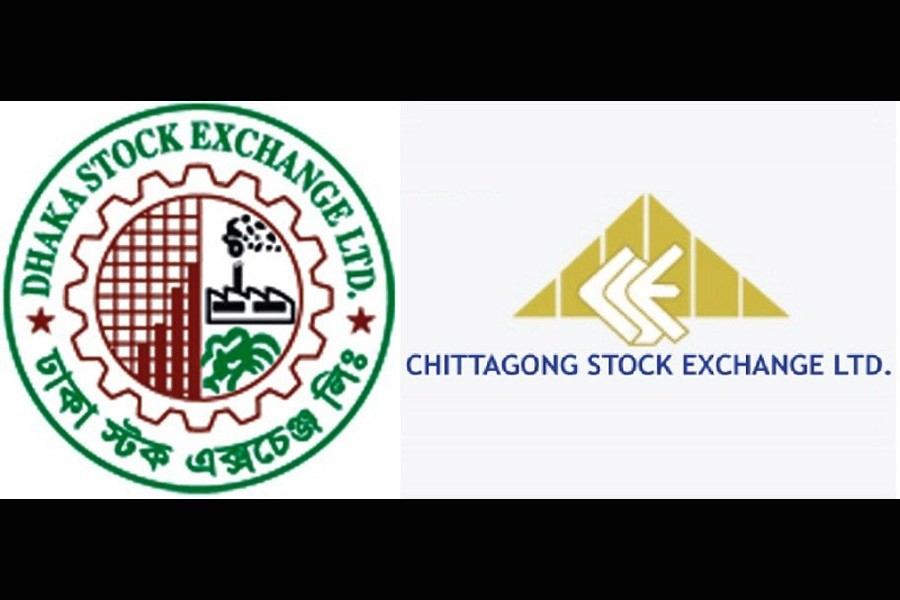The game is, possibly, on once again. Indications are there that some small-time manipulators after a gap of few months have re-entered the bourses with the objective of making quick bucks within a brief period.
After the great collapse of the market in 2010, market rallies of short duration have been more of a routine affair. Most players could realise the fact that the market behaviour was not natural yet none bothered to mention it openly. Usually, the artificial buoyancy fizzles out after sometime as support from genuine investors turns out to be too scanty.
The stock market indices went up notably during the past few weeks. The core index of the Dhaka Stock Exchange (DSE), DSEX, which had replaced the DGEN, reached the highest level since its introduction on January 27.2013. The trend is still on with daily transactions ranging between Tk 12 and Tk 14 billion.
The uptrend of the market is most desirable. Notwithstanding the fact that the number of quality issues remains highly inadequate the market deserves more attention from the real and long-term investors. But watching the ongoing market developments, many people could hardly resist the temptation to ask one obvious question: Is the current market buoyancy for real?
Market pundits are better positioned to provide an answer to that question. But they might prefer to be ambiguous while giving a reply. Yet, going by the concentration of investors' 'interests' in certain kinds of listed stocks, they might find it difficult to ignore some abnormalities in the so-called market buoyancy.
The investors are reportedly showing unusual interest in stocks of banks and a few financial institutions, pharmaceutical companies and telecommunications.
There should not be any earthly reason for the investors to rush in for banks' stocks. The performance of most listed banks in the immediate past calendar year was nothing impressive. Their latest half-yearly unaudited financials did not offer anything special either. Rather media reports on loan scams and burden of non-performing loans in the banking sector are supposed to make the investors sceptical. Moreover, the names of a few banks that are now at the top of the demand chart are enough to raise suspicion about the ongoing market rally. Another case in point is the unusual hike in the prices of Monno Ceramics and Standard Ceramics. Both shares having a face value of Tk 10 each are now being traded at over Tk 100.
Monno and Standard declared 5.0 per cent and 10 per cent cash dividend respectively in 2016. Does this kind of return or EPS (earning per share) substantiate any major increase in the price of any stock?
The securities regulator has formed probe bodies to look into the reasons for 'unusual' hike in share prices of Monno and Standard. But results of such probe usually remain unknown.
What is more worrying is the hike in prices of a number of 'Z' category shares. Despite the fact that the volume of transactions involving these issues does constitute an insignificant part of the overall daily transactions in bourses, the trend points to a very unhealthy development. A section of small investors is involved in a sort of gambling with junk shares when some crooks try to push up the market artificially.
The best indicator for measuring the true buoyancy of the Bangladesh market remains to be the participation of institutional investors, banks and non-banking financial institutions being the most important ones.
The participation of institutional investors beyond a decent limit was largely responsible for the buildup of the bubble in 2010. All concerned, including the regulators, had become oblivious of the end-result of such unbridled institutional investment. But when measures were taken to rein in the banks and relevant others, it was too late. The market had crashed with thousands burning their fingers. Most institutional investors, however, had earned hefty profit while only the late entrants had to count losses.
It is most unlikely that institutional investors have made their entry into the market lately even on a modest scale and help unusual buoyancy.
The presence of foreign equity fund is still insignificant and it can no way push the market up consistently.
Given the rate of return that general savers get from their deposits with banks, they have valid reasons to put in their money in listed stocks or the government savings tools. But the savers and pensioners seem to avoid that investment avenue because of the risk factor and the bitter experience some of them had in the recent past. So, savings tools that offer handsome return compared to other investment options remain to be their top most choice.
There is no denying that market needs bigger presence of genuine investors, availability of quality stocks in adequate volume and fair and transparent trading with the securities regulator watching constantly. But prior to that, it is necessary to remove the market imperfections first so that knowledgeable investors, not the ignorant ones, feel confident to come to the market.


